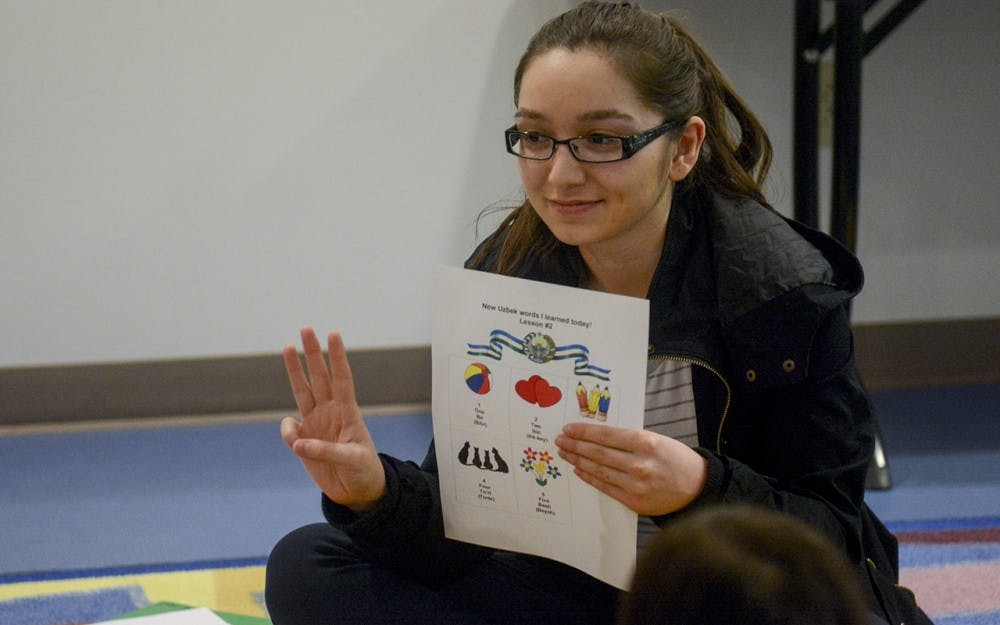One child hid under the chairs and waved at his mother while another dipped his hat over his head and began to walk around the room with hands outstretched like a zombie.
However, when the Bridges language instructors walked in, the children sat down in a circle.
“How many of you are ready to learn?” language and program coordinator Suriati Abas said to the class.
Hands shot up.
The class was a part of the Bridges program, which works with IU to provide language and culture classes for children ages 4 and above. The program offered its second Uzbek class Monday for children at the Monroe County Public Library.
During the class, children played Simon Says and counted fish and turtles. By the end of the class, they were all able to introduce themselves and count to five in Uzbek.
Parent Enabah Shahrani said she brought her half-Uzbek children to the class so they would stay in touch with their heritage.
Only 26,000 Uzbeks live in the United States, according to the Joshua Project, an organization that studies ethnic groups around the world.
“As they grow up in America, it is so easy to lose that language and heritage,” Shahrani said. “Especially with an uncommon language like Uzbek, children are more likely to lose it.”
Abas said Bridges focuses on instructing children in more uncommon languages. Bridges offers Uzbek, along with Chinese, Russian and Turkish because they are often overlooked by other institutions.
“These languages, Uzbek especially, don’t receive the attention that others do,” Abas said. “I think it’s important we offer them so that children don’t lose parts of their heritage and history and identity.”
IU is one of the few universities in the country with an Uzbek program, according to the Department of Inner Asian and Uralic National Resource Center’s website. IU offers beginner through advanced classes.
While holding onto heritage is important, Uzbek instructor Madina Alimova said it is common for younger children to push away their own language while growing up in a different country. As a result, younger children can at times be more difficult to teach.
“We just have to push them a bit because they don’t realize how important it is to learn new languages until they’re older,” Alimova said. “But I’m sure they’d be pretty appreciative then.”
Abas said Bridges targets these difficulties in engaging younger children by using interactive and communicative methods.
“The children learn through play,” Abas said. “We play games and sing songs and use more visual types of learning. You will never see the children sitting at desks and writing.”
Through these methods, Abas said she hopes to help children improve their memories and abilities to learn and deconstruct language.
“Learning languages teaches you how to think,” she said. “When you deconstruct a language, it improves you understanding in every aspect of learning.”
She said these classes will also help children expand their understanding of the world and learn about culture by developing language skills. This is especially important to imbue in children while they are young.
“Learning a new language shapes the way you think about things,” Abas said. “But it also changes your worldview and allows you to understand cultures, which forms a mutual respect between cultures.”
Mutual understanding and respect for other cultures in especially important in our changing world, Uzbek instructor Shahlo Seidmedova said.
“Global diversity is really spreading,” she said. “You can no longer expect to stay in your own bubble and live in a homogenous society. As cultures mix, we need to understand and respect one another.”






